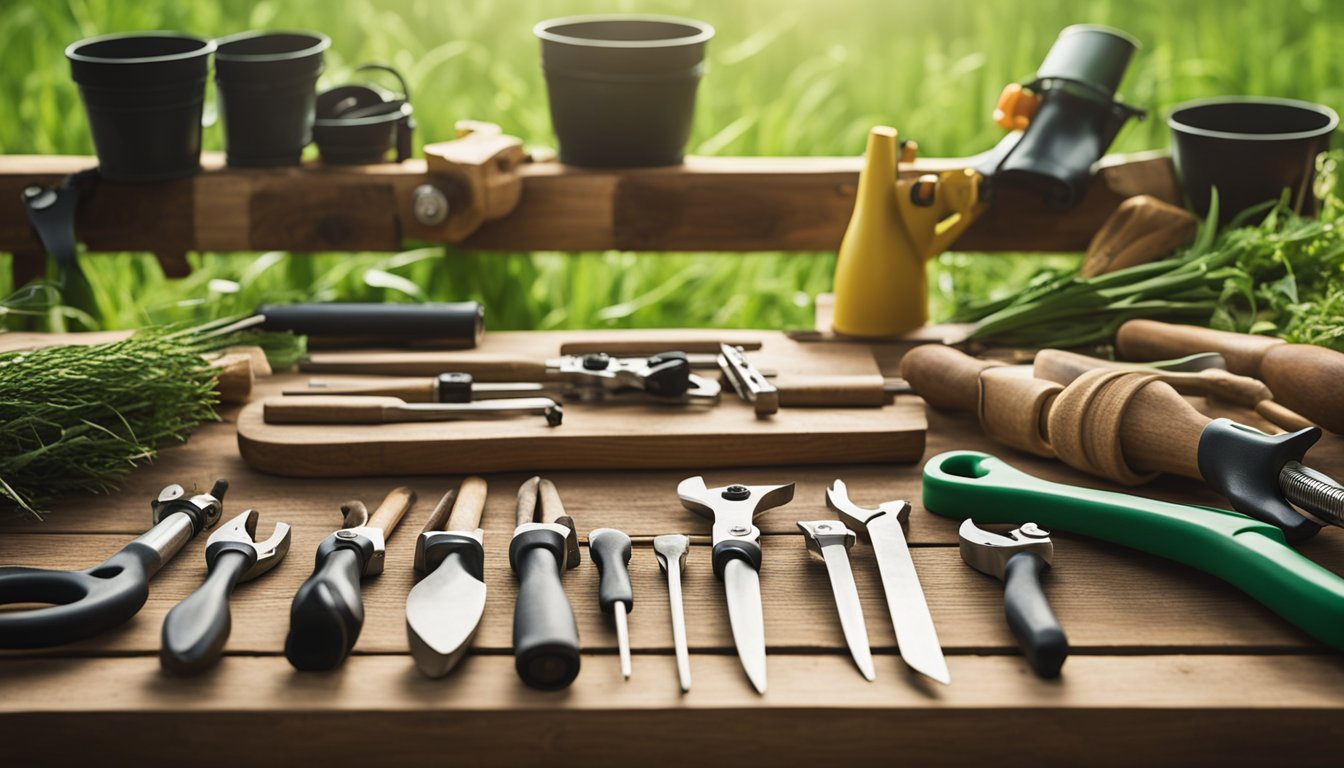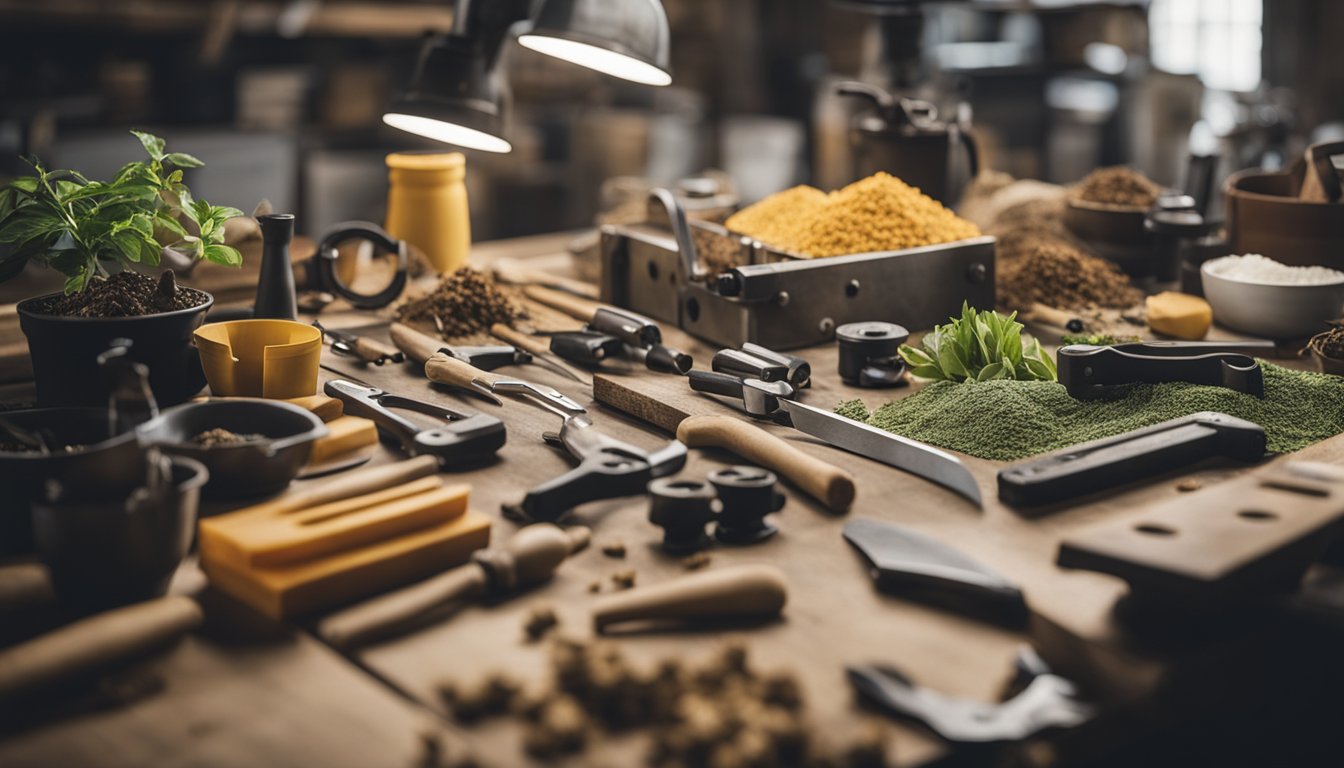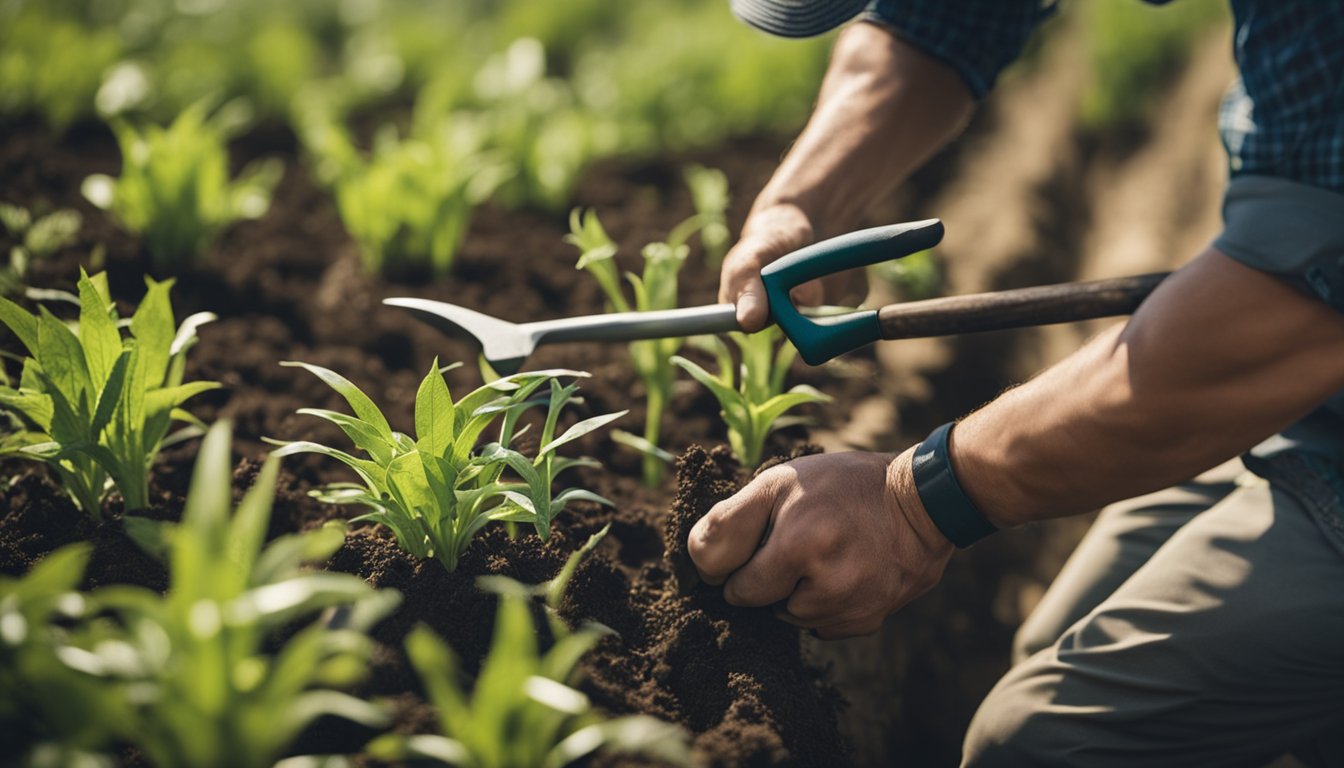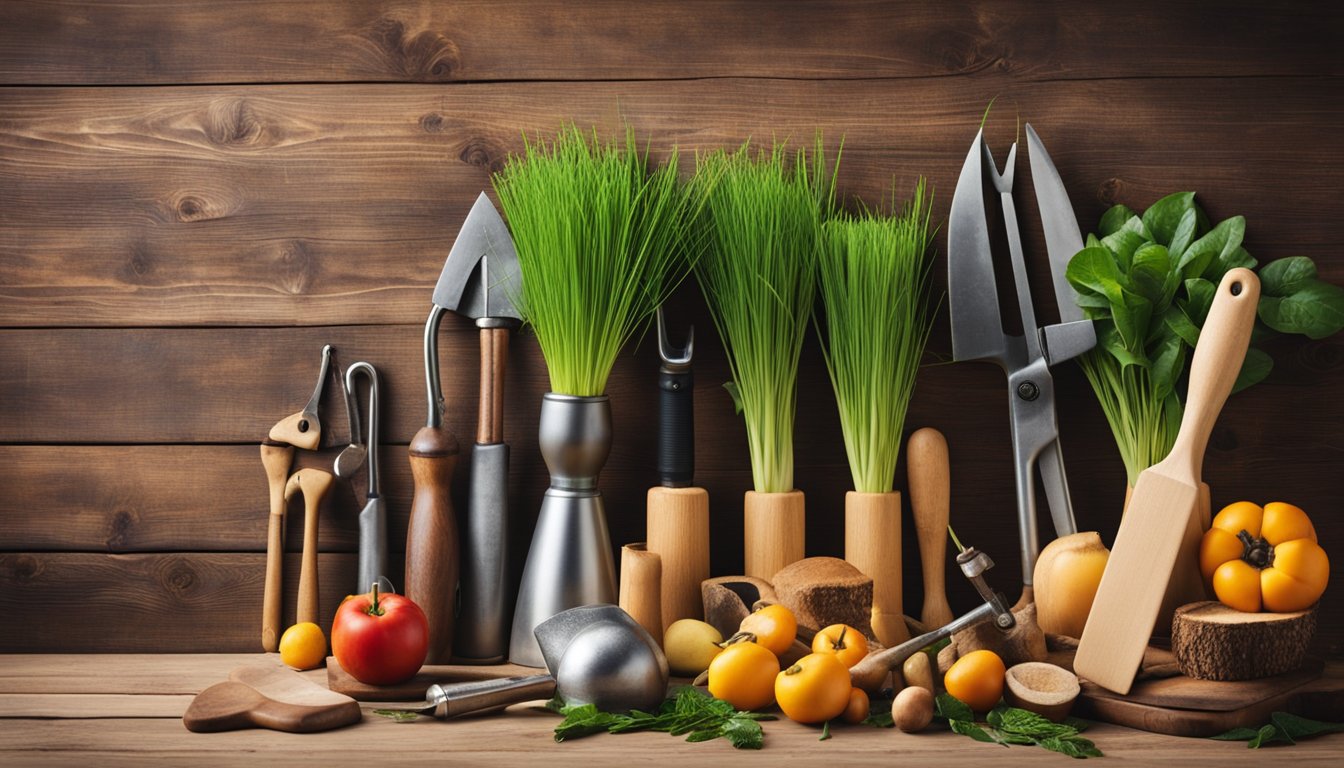Gardening is a rewarding hobby that allows us to connect with nature while beautifying our surroundings. Whether we are planting flowers, vegetables, or herbs, having the right tools makes the experience more enjoyable. One essential tool for any gardener is a good pair of gardening gloves. They protect our hands from dirt, thorns, and blisters, making gardening safer and more comfortable.

When choosing gardening gloves, it’s important to find a pair that fits our needs. There are many options available, including gloves designed for specific tasks or types of users. For example, some gloves are made for heavy-duty work while others are lightweight for delicate tasks. Additionally, we can find gloves in different sizes for men, women, and kids. Waterproof gloves can keep our hands dry in wet conditions, and some gloves even have claws for easy digging.
As we consider gardening gloves, we should pay attention to the material, size, and durability. The right fit ensures comfort and protection, while quality materials can affect how long they last. With the variety available, we have many choices to suit our gardening style. We gathered and tested a selection of gardening gloves to help you find the best options for your gardening needs.
Best Gardening Gloves
We have researched and compiled a list of the best gardening gloves available. Whether you need durable gloves for tough tasks or lightweight options for delicate work, there is something here for everyone in your garden. Explore our top picks to find the perfect pair for your gardening needs.
TrustBasket Heavy Duty Garden Gloves
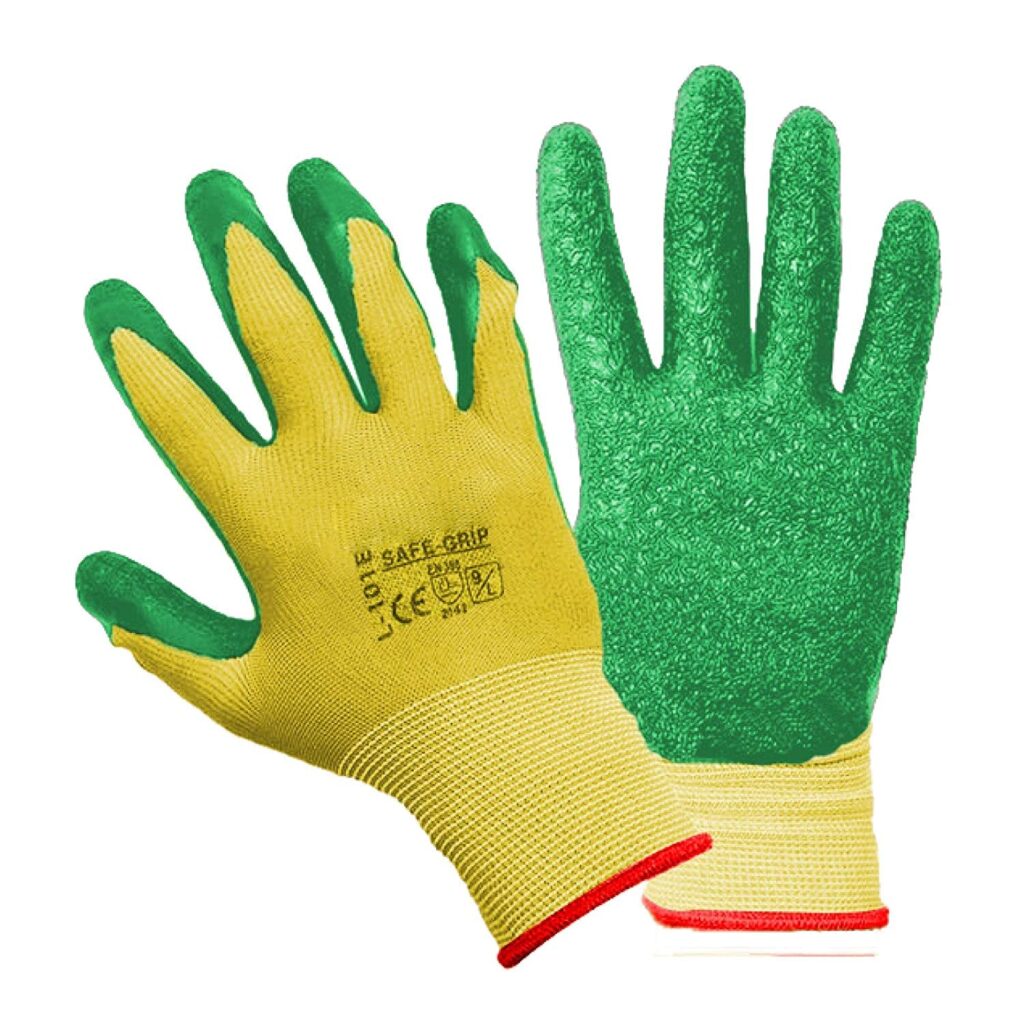
We think these gloves are a solid option for light to medium gardening tasks.
Pros
- Comfortable fit with good grip.
- Breathable material keeps hands cool.
- Easy to wash after gardening.
Cons
- Not waterproof.
- Size may be a bit large for some.
- Quality could be better for heavy-duty work.
These TrustBasket gardening gloves have helped us a lot during our gardening sessions. The ergonomic design provides comfort and makes them easy to wear for extended periods. The breathable open back allows air to flow, which keeps our hands feeling fresh even on warm days.
While the gloves look nice and have decent grip, they do have some downsides. They are not waterproof, which means we have to be careful when dealing with wet soil. Also, for those of us with smaller hands, these gloves might feel a bit loose.
Overall, these gloves are a good pick for basic gardening needs. They are easy to clean and don’t trap dirt and grime, which we really like. For the price and comfort, they deliver well on simple gardening tasks.
GROWTOP Gardening Claws
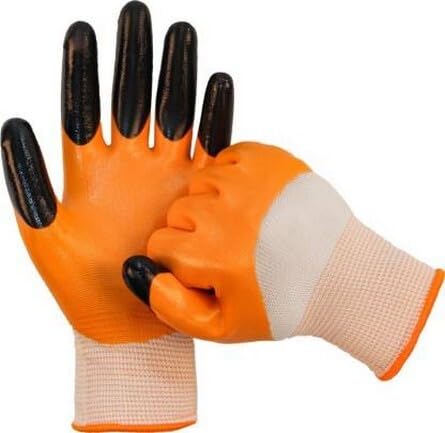
We found these gloves to be a solid choice for digging and planting tasks.
Pros
- Breathable cotton material keeps our hands comfortable.
- Reinforced fingertips add extra durability for heavy-duty work.
- Fingerless option gives us flexibility for various gardening tasks.
Cons
- Might not offer the best fit for very small hands.
- Full-finger version can feel a bit bulky.
- Not water-resistant, which can be a downside in the rain.
When we first tried the GROWTOP Gardening Gloves, the breathable fabric was noticeable right away. They kept our hands cool while we worked in the garden under the sun. We appreciated the reinforced fingertips, especially when dealing with thorny plants. It gives us peace of mind knowing we can dig and prune without worrying about damaging the gloves quickly.
The gloves come with a fingerless option, which we found helpful for tasks that require more dexterity, like planting tiny seeds or adjusting seedlings. This feature lets us easily manipulate smaller items, making our gardening tasks smoother. However, for some, the full-finger version might feel a little bulky, especially if you prefer lighter gloves.
Though these gloves excel in comfort and durability, they are not water-resistant. This limitation can be tricky if we’re caught in unexpected rain. Overall, they hold up well for regular gardening tasks, and with proper care, we expect they’ll last us through many planting seasons.
FreshDcart Gardening Gloves
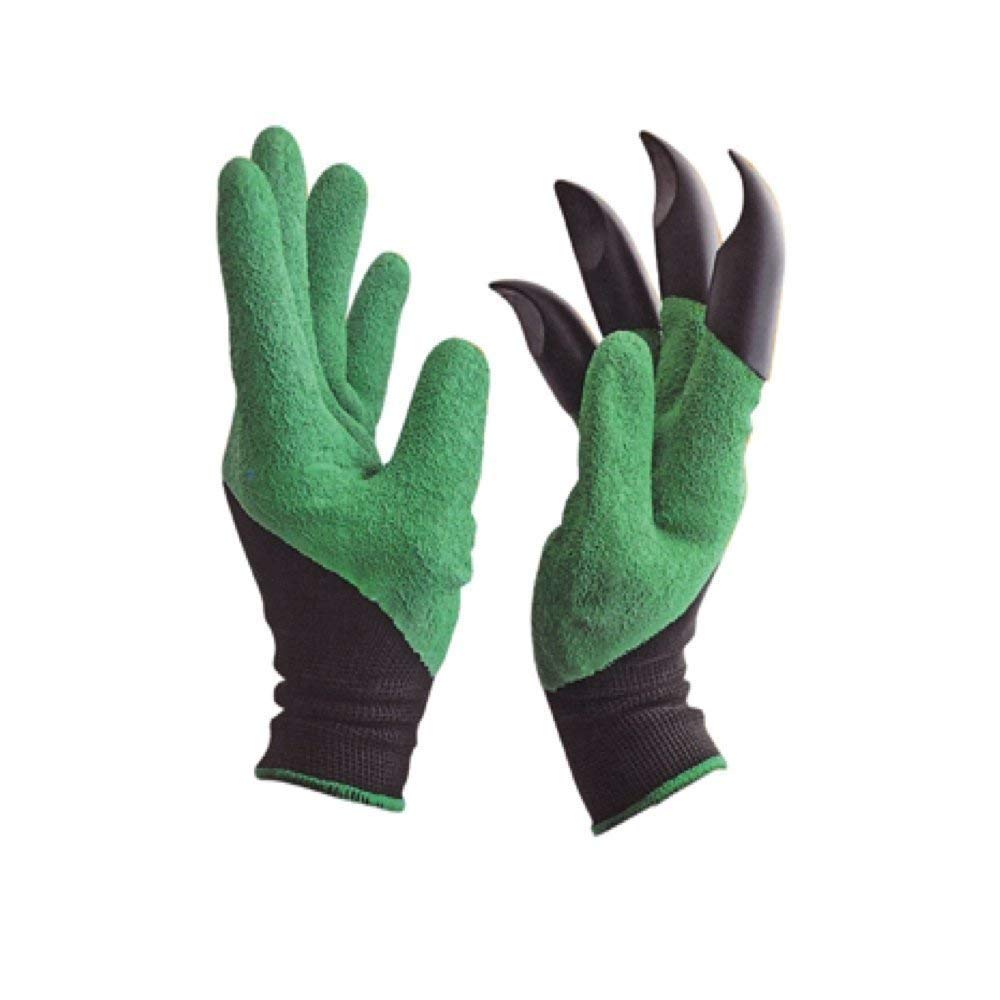
In our experience, these gloves offer a decent balance of comfort and functionality for many gardening tasks.
Pros
- Lightweight and easy to wear
- Easy to wash and maintain
- Good grip for digging and planting
Cons
- Claws may come loose with use
- Not very durable for heavy-duty tasks
- Some users found them less effective than expected
We found the FreshDcart Gardening Gloves to be quite convenient for light gardening tasks. The lightweight material makes them easy to wear for extended periods. We appreciated how soft and flexible they felt, allowing us to work comfortably without our hands getting too sweaty.
The claws are a fun feature for digging and planting. They do help with softer soil, making it easier to transfer plants or dig small holes. However, we noticed that the claws can come off after some use, which can be frustrating.
While these gloves are very easy to clean, they might not stand up to tougher gardening jobs. If you’re planning to do heavy landscaping, you might want a sturdier option. Many users agree that they’re best suited for light gardening rather than heavy-duty tasks.
Scotch-Brite Rubber Heavy Duty Gloves
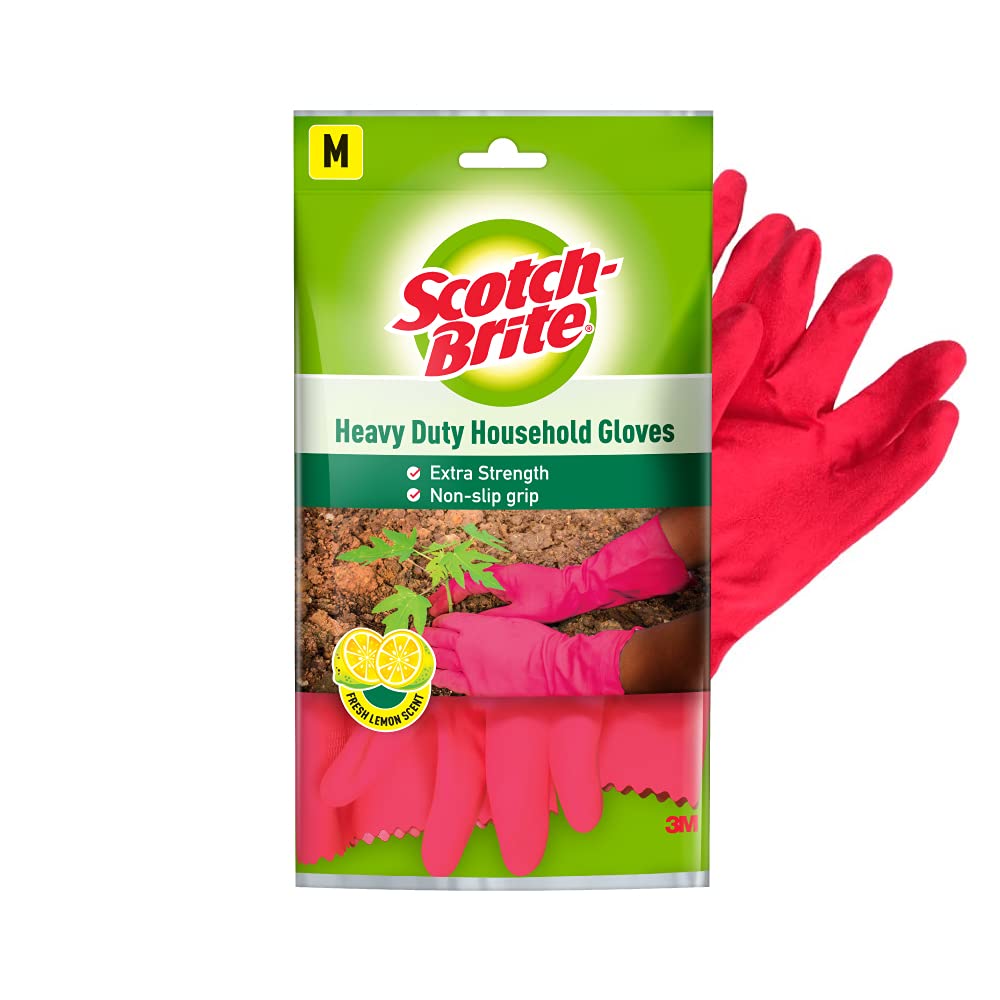
These gloves are a solid choice for anyone needing protection and comfort during heavy-duty tasks.
Pros
- Made from eco-friendly rubber
- Provides a fresh lemon scent
- Extra thick for enhanced protection
Cons
- Might feel tight for larger hands
- Could be less durable with frequent use
- Not suitable for very heavy-duty tasks
We recently used the Scotch-Brite Rubber Heavy Duty Gloves for various tasks, like gardening and cleaning. The thicker material really stood out. It protected our hands from dirt and moisture effectively. Plus, the fresh lemon scent made cleaning chores feel a bit nicer.
Another great feature is the inner cotton lining that keeps our hands comfortable even during long use. We found that the extra-long cuffs helped prevent water from getting in, making them great for dishwashing as well.
On the downside, individuals with larger hands might find these gloves a bit snug. While they hold up well for general use, we noticed they might not be the best for very tough jobs, as some users found them less durable after multiple uses.
F8WARES Heavy Duty Rubber Gardening Gloves
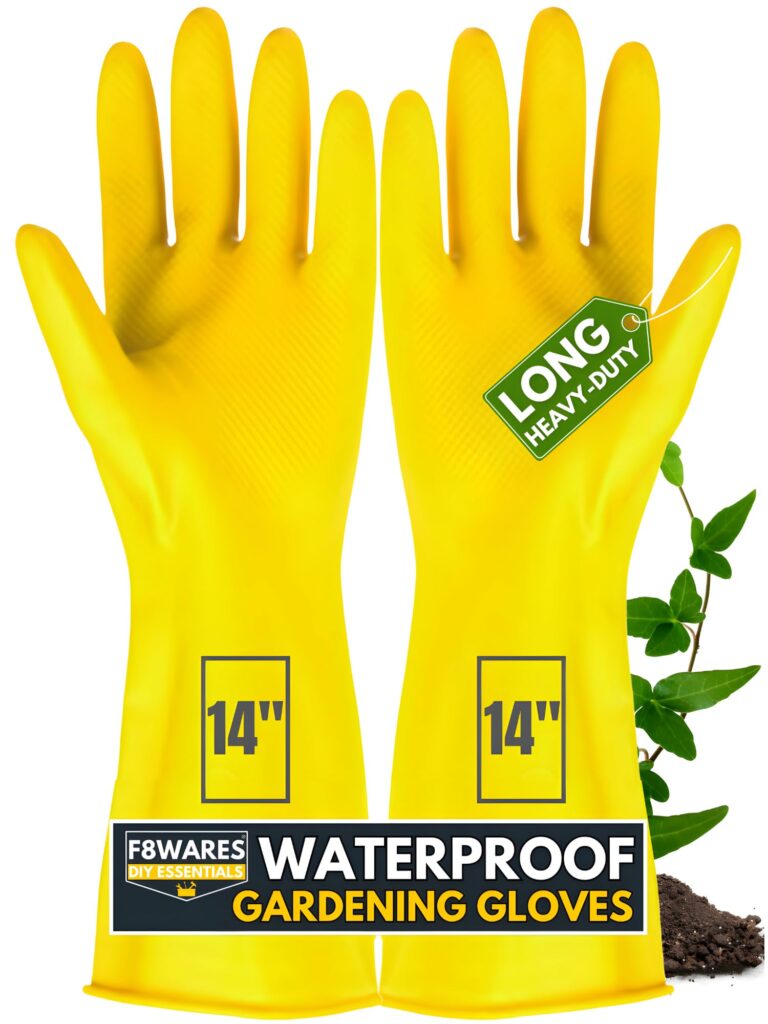
These gardening gloves are solid for anyone needing a robust option for yard work.
Pros
- Excellent protection against thorns and rough materials.
- Versatile enough for various gardening and farming tasks.
- Made with durable materials, ensuring a long lifespan.
Cons
- Can feel warm after extended use due to thickness.
- Some users reported sizing issues.
- May limit dexterity for precise tasks.
We recently tried the F8WARES rubber gardening gloves and found them to be effective for our home gardening projects. The gloves provide great coverage, protecting our hands when dealing with thorny plants and heavy pots. They feel strong and sturdy, making them reliable for tough gardening tasks.
While putting these gloves to the test, we appreciated their waterproof feature. They kept our hands dry when working in wet soil. However, we noticed that they can get a bit warm inside after using them for a while, which may not be ideal for everyone.
One challenge we faced was with dexterity. The thickness of the gloves made it tricky to perform some delicate tasks. Despite this, the gloves remain a solid choice for general gardening and heavier jobs. If you’re in the market for a tough and protective option, these may be just what you need.
ETSHandPro Nitrile Gloves
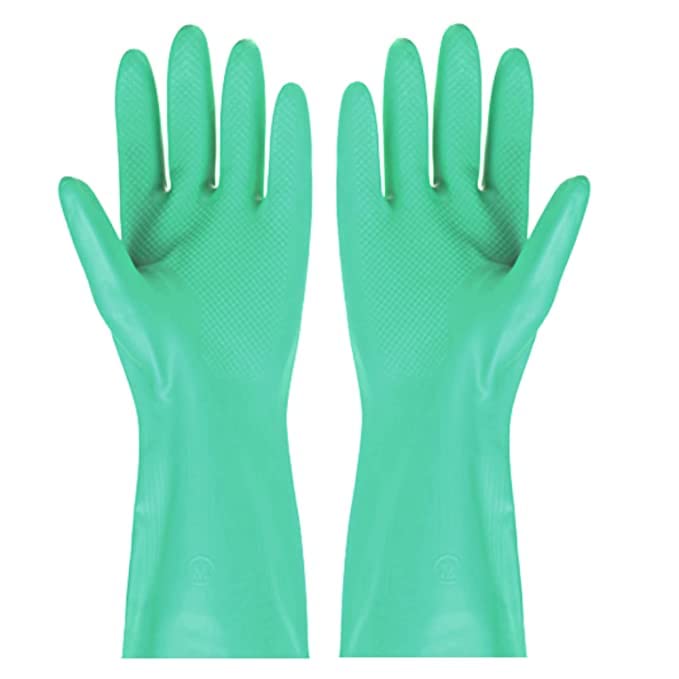
These gloves offer solid performance for various tasks, making them a great option for anyone who needs reliable hand protection.
Pros
- Strong chemical resistance for cleaning and gardening.
- Comfortable fit that allows for good dexterity.
- Durable and reusable, suitable for multiple applications.
Cons
- Might feel too large for those with smaller hands.
- Limited color options might not appeal to everyone.
- Not designed for extreme temperatures.
After using the ETSHandPro nitrile gloves, we found their strength quite impressive. When we tackled heavy-duty cleaning tasks, the gloves held up well against chemicals and oils. They didn’t tear or wear down easily, which is a big plus for any cleaning or gardening work.
The comfort of these gloves is worth mentioning. They fit snugly without being restrictive, so we could easily handle tools and objects without losing grip. This feature is essential when working in a garden or washing dishes, as we often need to switch tasks frequently.
We also appreciate their versatility. Whether we were cleaning the kitchen or digging in the soil, these gloves proved helpful. They are great for everyday chores and can withstand various tasks, making them an all-around choice for home maintenance.
F8WARES Nitrile Gardening Gloves
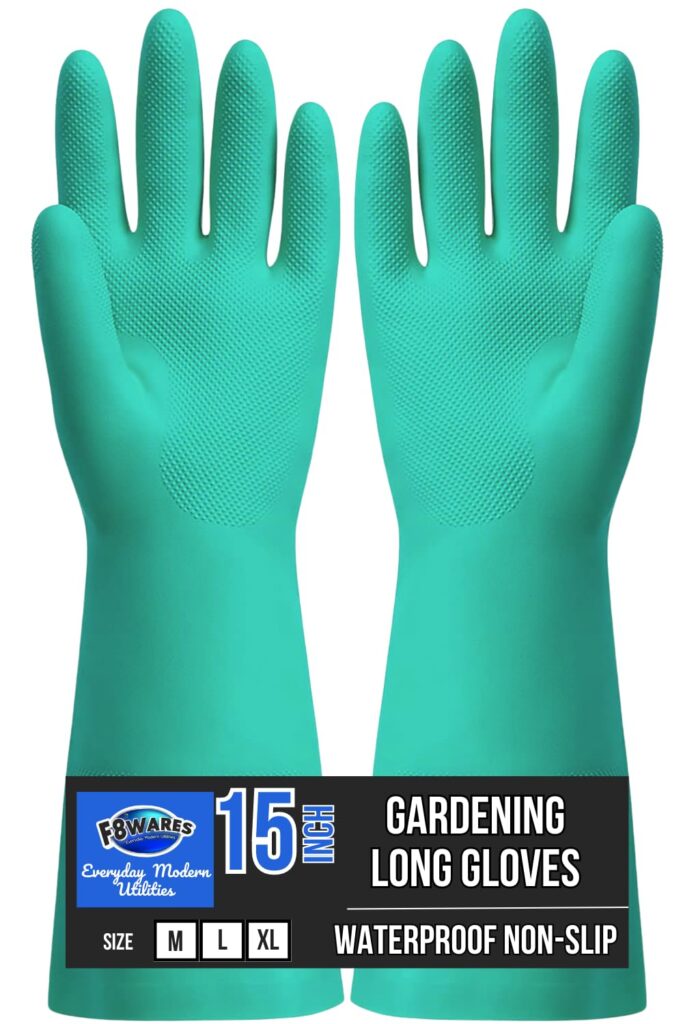
We recommend these gloves for anyone looking for reliable gardening protection.
Pros
- Solid waterproof material.
- Good length for arm coverage.
- Versatile for various gardening tasks.
Cons
- Might not be as durable as some expect.
- Rubber can feel hard.
- Limited size options available.
We recently tried the F8WARES Thick And Heavy Duty Reusable Nitrile Gardening Gloves, and they definitely have some strengths. The waterproof feature is great for those wet gardening days. We appreciated the longer length that protects our arms, which is a plus when digging or clearing out weeds.
On the downside, a few of us noticed that the rubber feels a bit hard. While this might protect your hands, it can be uncomfortable during extended use. Additionally, some users mentioned that the gloves might not hold up as well as anticipated, especially when using sharper garden tools.
Overall, these gloves work well for simple gardening tasks, like pulling weeds or planting. If you’re looking for something to save your hands during general garden work, these can be a good choice, especially for home gardening needs.
CINAGRO Heavy Duty Garden Gloves
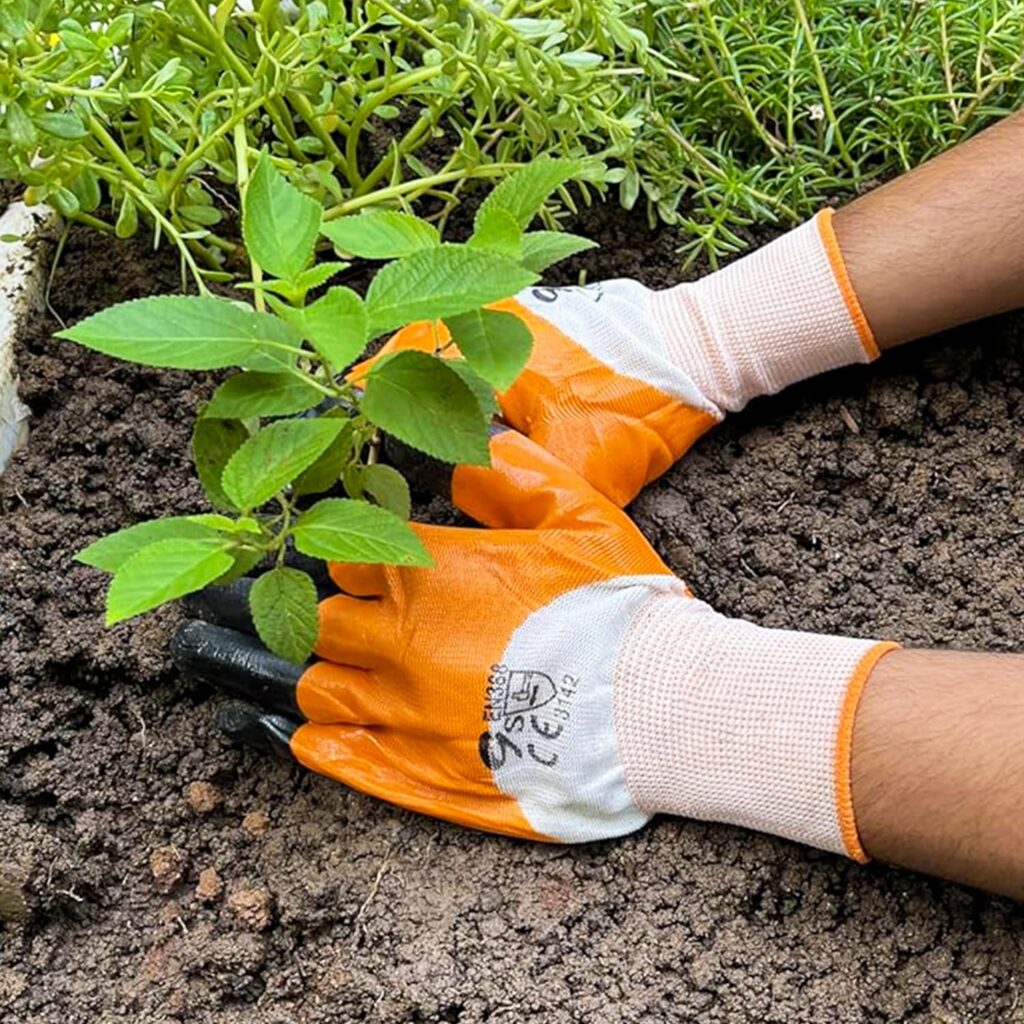
These gardening gloves are a solid choice for those seeking durable protection while gardening.
Pros
- Made from strong and durable materials
- Comfortable and easy to wear
- Reusable and washable for long-term use
Cons
- Some users reported issues with water and mud getting inside
- Fit may vary based on hand size
- Quality concerns noted by a few customers
We’ve had the chance to use the CINAGRO Heavy Duty Garden Gloves, and they truly excel in many gardening tasks. The strong material provides excellent protection against cuts and scrapes. We appreciated how easily they are to put on and use right out of the package, making them convenient for immediate gardening needs.
Comfort is another highlight. The ergonomic design allows us to work for extended periods without discomfort. However, there are some drawbacks. A few users mentioned that the knitted part of the gloves can let in dirt and moisture, which can be a bit annoying during wet conditions.
All in all, these gloves are suitable for various gardening activities. They serve us well for lighter tasks, but we should be mindful of potential water and mud exposure. If you’re looking for dependable gloves for everyday garden work, these could be worth considering.
Robustt Heavy Duty Rubber Gloves
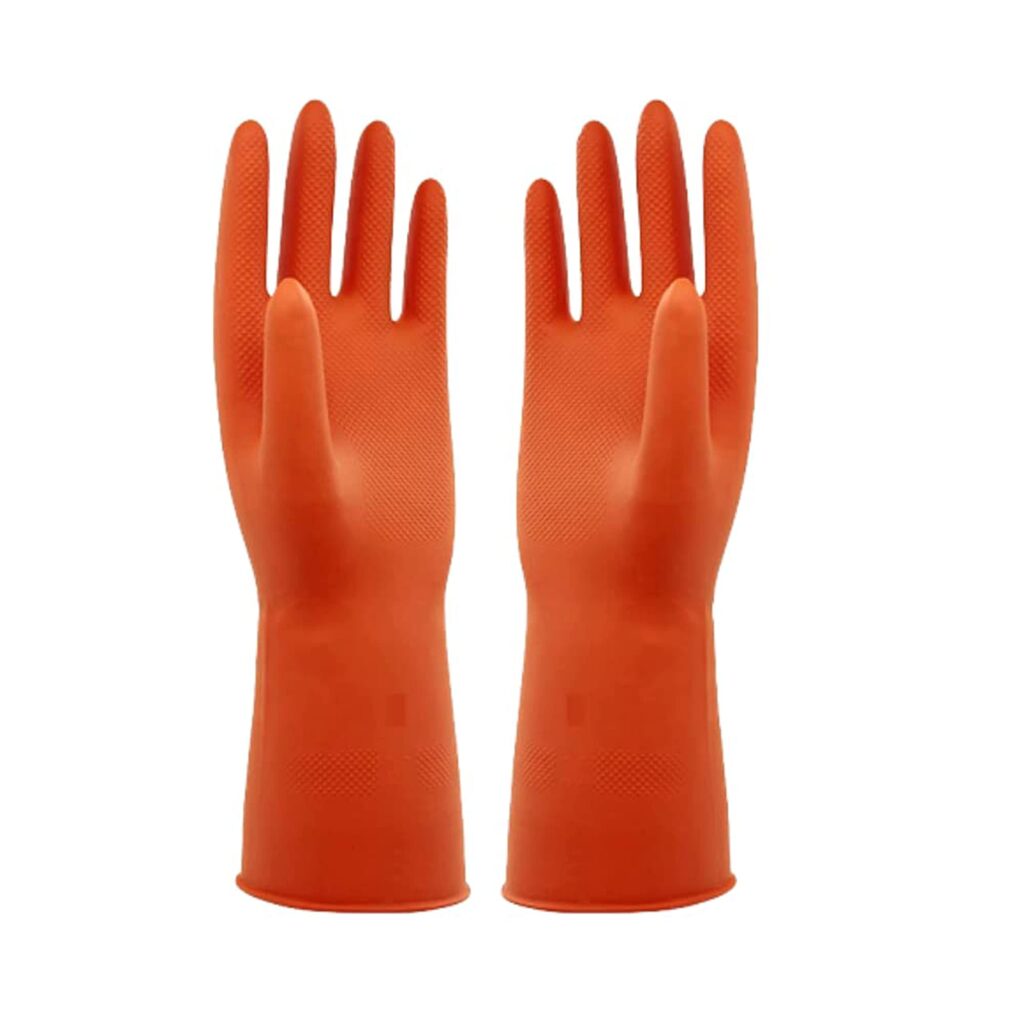
These gloves are a solid choice for anyone needing reliable protection during gardening or cleaning tasks.
Pros
- Lightweight and flexible, making them easy to wear.
- Excellent at protecting hands from water and dirt.
- Durable enough for multiple uses.
Cons
- Some users find the sizing a bit off.
- The rubber quality could be better.
- A few reports of discomfort after extended wear.
We recently tried the Robustt Heavy Duty Rubber Gloves for various tasks, and they proved to be quite handy. The gloves fit snugly on our hands, allowing us to dig in the garden without worrying about dirt getting under our nails. We appreciated how lightweight they felt, making it easy to carry out our tasks for an extended period.
These gloves are specially designed to handle both wet and dry conditions. We used them for washing dishes and found them effective at keeping our hands dry. The gloves also resisted punctures well, and the rubber held up nicely against scrubbing surfaces.
On the downside, sizing can be an issue. A few in our group felt that the gloves run a bit tight, which could be a concern for those who prefer a looser fit. Additionally, while they perform well for basic use, the quality of the rubber might not stand up to heavy-duty wear over time. Still, for the price, many will find these gloves a valuable addition to their cleaning and gardening gear.
Jupiter Industries Leather Rose Gardening Gloves
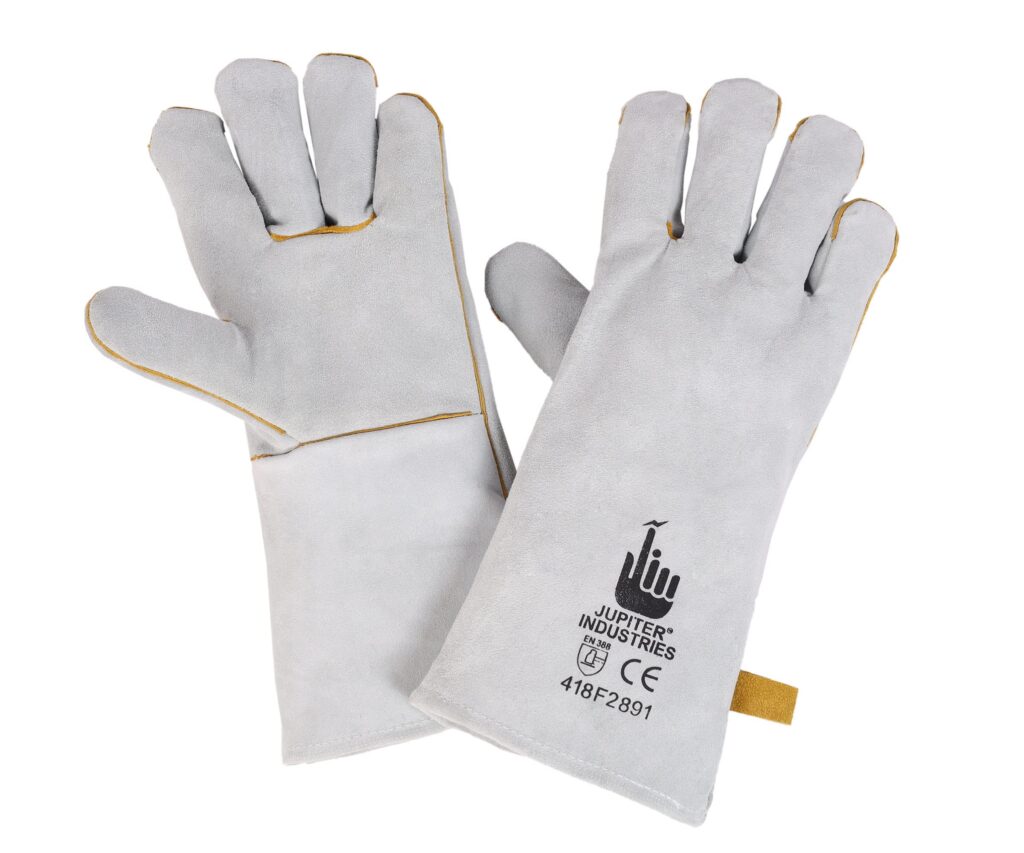
We believe these gloves are a solid choice for anyone looking to tackle thorny plants with confidence.
Pros
- Thorn proof design offers great protection.
- Elbow-length coverage keeps arms safe.
- Made of high-quality leather for durability.
Cons
- May feel restrictive for some activities.
- Limited adjustability for a perfect fit.
- Not ideal for extensive farming tasks.
Using the Jupiter Industries Leather Rose Gardening Gloves has been a positive experience for us. The thorn-proof feature is impressive, allowing us to handle even the most stubborn thorny bushes without worrying about injuries. We put these gloves to the test on a Bougainvillea with thick thorns, and they held up beautifully.
The elbow-length design is a great bonus. It keeps our forearms protected, especially when working with wild plants or during heavy pruning. The leather material feels sturdy yet supple, making them comfortable for extended use.
That said, we did notice that they might feel a bit tight for some tasks. While they are perfect for gardening, adjusting to smaller, delicate tasks can be challenging. These gloves excel in certain conditions but might not be suited for all types of gardening jobs.
Buying Guide
When choosing gardening gloves, we should consider a few important features. Here’s what to look for:
Material
- Leather: Durable, good for heavy tasks.
- Cotton: Breathable, great for light gardening.
- Rubber: Waterproof, ideal for wet conditions.
Fit
The right fit is crucial for comfort. Gloves should be snug but not too tight.
Size Options
- Adult Sizes: Comes in small, medium, large.
- Kids Sizes: Look for options designed specifically for children.
Special Features
Some gloves have extra features:
- Claws for Digging: Handy for planting.
- Waterproof Linings: Keep your hands dry.
Grip
A good grip helps prevent slipping. Look for textured palms or fingers.
Protection
Choosing gloves with longer cuffs can protect our wrists and forearms. This is useful for thorny plants and rough tasks.
Care Instructions
Check washing instructions. Some gloves are machine washable, while others need hand washing.
Price Range
Gardening gloves can vary in price. We can usually find quality options at different price points.
By considering these factors, we can make an informed choice when buying gardening gloves that suit our gardening needs.
Frequently Asked Questions
We often seek clarity on various aspects of gardening gloves. The following questions address material choices, features, and benefits of different types of gloves.
What are the best materials for heavy-duty gardening gloves?
Heavy-duty gardening gloves are often made from leather, textile blends, or synthetic materials. Leather offers durability and protection, while textile blends provide flexibility. Look for gloves that have reinforced fingertips and palms for added strength.
How do you choose suitable gardening gloves for children?
When choosing gardening gloves for kids, consider their size and the glove’s fit. Lightweight materials are best for comfort. Additionally, gloves with bright colors or fun designs can make gardening more enjoyable for children.
What features should gardening gloves have for high dexterity tasks like weeding?
For tasks requiring high dexterity, gloves should be thin yet tough. Look for gloves with a snug fit and flexible materials. Grip features, like textured palms, also help in handling small tools and plants easily.
Can gardening gloves be both waterproof and breathable, and which brands offer this?
Yes, some gardening gloves can be both waterproof and breathable. Brands like Bionic and Foxglove provide options with these qualities. These gloves keep hands dry while allowing for airflow, preventing sweat buildup.
In what ways are gardening gloves with claws beneficial for gardeners?
Gardening gloves with claws are designed for easy digging and planting. The claws help in tilling soil and removing weeds without the need for extra tools. They also allow us to shape the soil easily.
What are the advantages of rubber gardening gloves compared to other materials?
Rubber gardening gloves are waterproof, making them great for wet conditions. They provide excellent grip and protection from thorns and sharp objects. Compared to other materials, they are often easier to clean and maintain.
